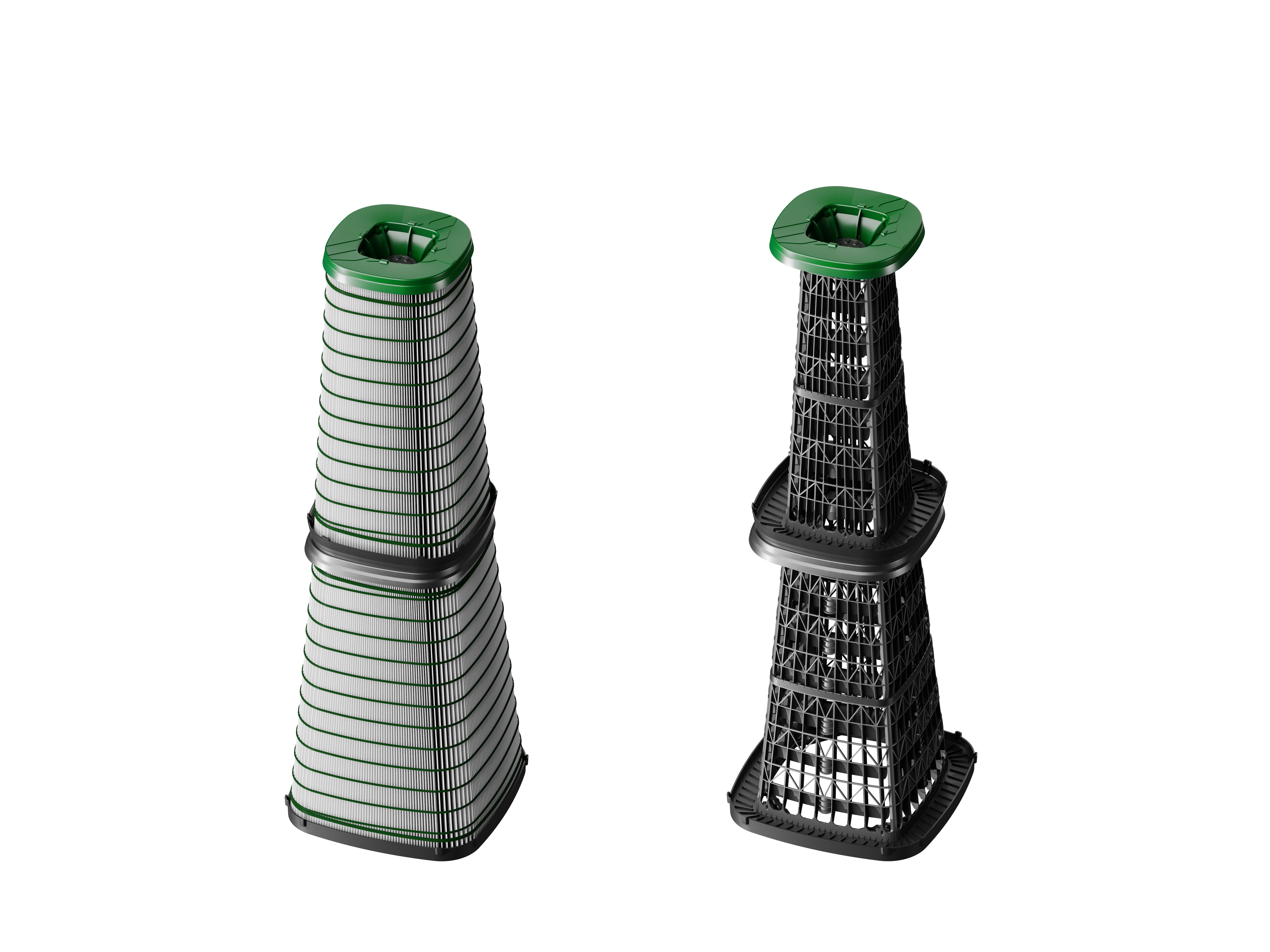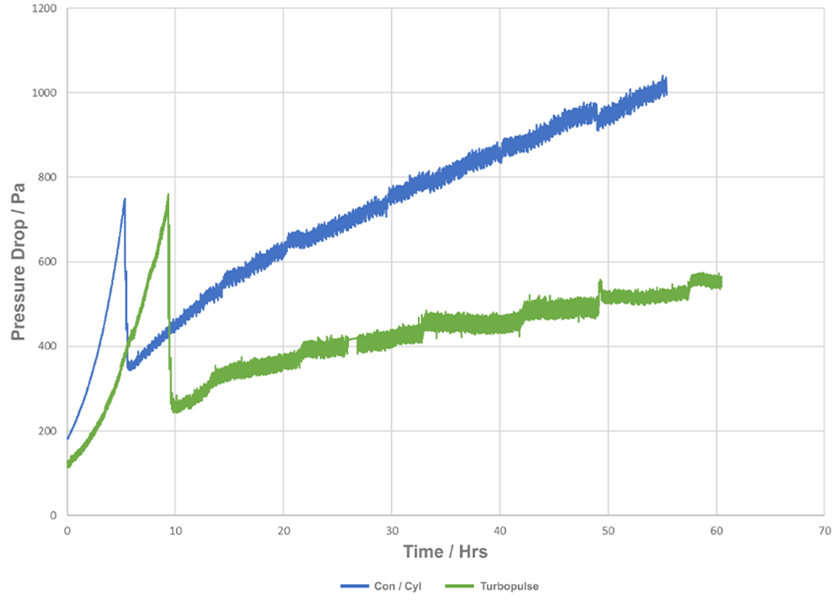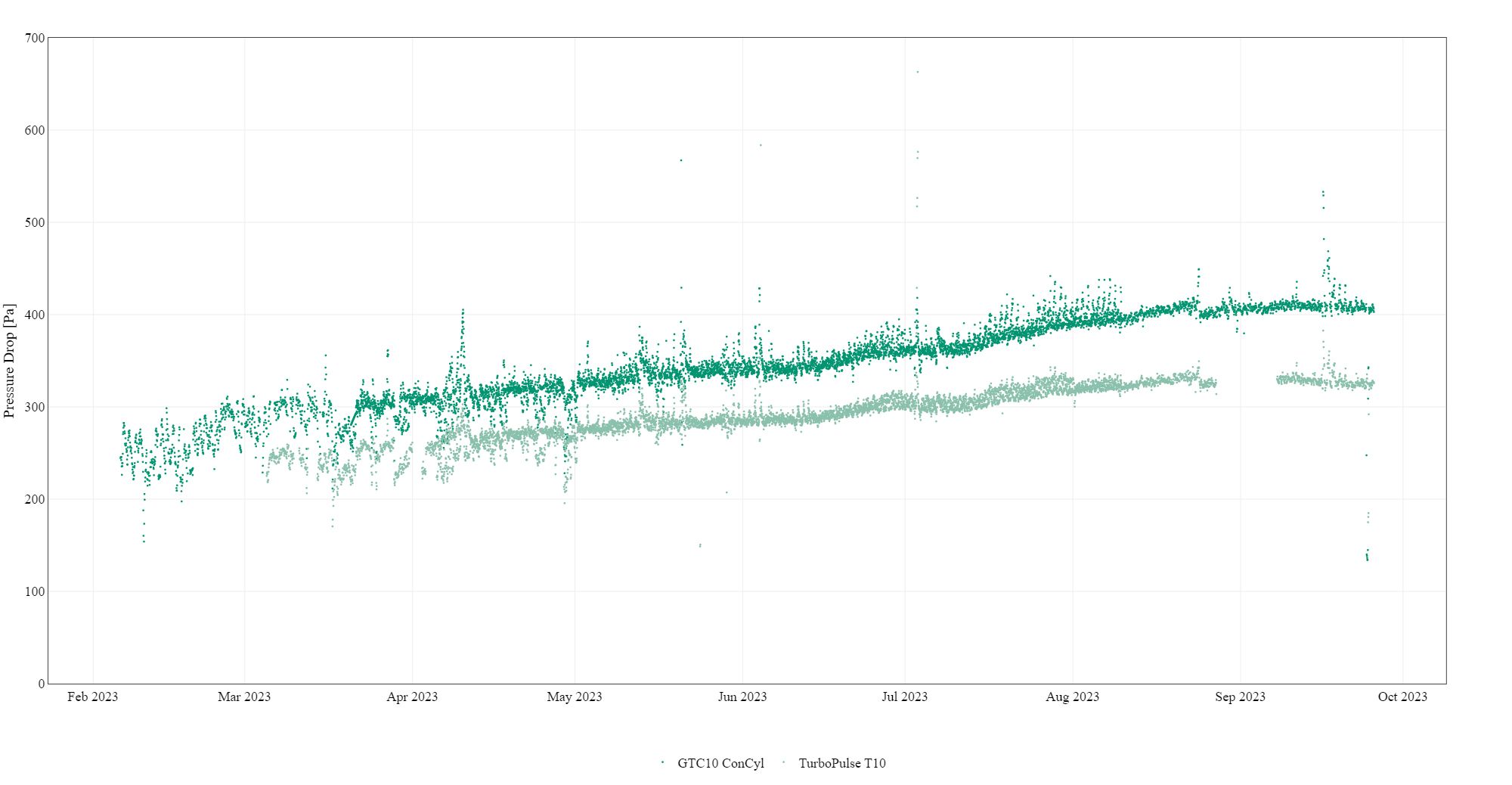Recent Advances in Pulse Filtration for Gas Turbines
Sophie Belanger
Global Product Manager
Camfil Power Systems

Since their inception in the 1970s, gas turbine self-cleaning filters have seen few significant advancements. Back then, the cost of gas was on the rise, prompting plant operators to seek more efficient ways to run their gas turbines. To achieve this, they began using air filters as a means of maintaining operational efficiency and minimizing wear and tear. Specifically, dust collector designs featuring updraft filters (as depicted in Fig. 1) were introduced in desert and snowy regions, where they proved effective in extending the lifespan of filters.
As gas turbines continued to grow in size, driven by the pursuit of greater power output, the demand for airflow increased. To address this challenge without imposing a substantial expansion of the updraft filter housing, a shift occurred in filter design towards a cross-flow setup (illustrated in Fig. 2). This cross-flow orientation allowed filter housings to expand vertically, thus preventing a significant increase in the required footprint.
However, the adoption of horizontal filter installation came with trade-offs. Unlike updraft filters, dust and water do not fall off naturally and tend to accumulate on lower stage filters. This leads to less efficient pulsing and pressure drop, as well as increased risk of re-entrainment. Additionally, horizontally-mounted filters have a high risk of bypass due to improper installation or poor maintenance practices. As a result, the risk of poor sealing and dust getting through to the clean air side may increase over time, leading to engine degradation such as erosion, fouling and corrosion.
Figure 1 Typical Tenkay updraft filter house
Figure 2 Horizontal cross-flow filter installation in a combined filter house
When looking at filters, innovation in cross-flow filters has been limited to media improvements. The introduction of glue bead pleat separation improved the filter's media structure, resulting in better pulsing and increased media usage. The introduction of new media types such as synthetic depth loading and membranes improved filter efficiency and humidity performance. However, the overall filter construction and geometry have remained the same.
Figure 3 The TurboPulseTM filter featuring an innovative pyramidal cage construction with TurboVanes for improved airflow and pulsing

Static gas turbine filters, on the other hand, have evolved widely. Molded plastic components and modern manufacturing technologies have allowed for significant improvements in water handling, pleating, drainage, and sealing. By applying these technologies to self-cleaning filters, product performance could be dramatically improved. Enter TurboPulse™, a new product featuring molded plastic construction with an innovative pyramid shape. This product boosts performance and strength while offering 100% corrosion resistance and compatibility with existing conical-cylindrical installations. Its pyramidal shape allows for better water drainage, while the robust cage, featuring built-in aerodynamic TurboVanes (refer to Fig. 3), enhances airflow and pulsing performance. This not only reduces the initial pressure drop by up to 20%, but it also dramatically improves pulsing and reduces re-entrainment, extending the filter's lifespan.
TurboPulse™ outperforms the typical conical-cylindrical filter in continuous pulse testing that simulates sandstorms (Fig. 4). Both filters utilize the same depth-loading media to highlight how the new construction improved cleanability. Typically, depth-loading media perform well in high-humidity conditions but struggle to maintain a stable pressure drop in such tests. This issue is usually addressed with surface-loading media. However, the enhanced cleanability of the new filter construction provides the cleaning performance of a surface-loading filter while retaining depth-loading benefits under high humidity conditions.
Figure 4 Comparative performance of a con-cyl and TurboPulseTM filter during a continuous pulse test. Success is established if the filter pressure stabilizes before the end of the test. Both filters were built with the same media and pleating technology.

One of the first site installations featured two frame turbines running side-by-side. One unit was equipped with conical-cylindrical HemiPleat™ GTC10 filters, and the other with TurboPulse™ HemiPleat™ GTC10. Both filters were installed in February 2023, and the site has been monitored by the PowerEye™ predictive monitoring service. PowerEye™ has shown a significantly lower initial pressure drop for the TurboPulse™, with the pressure drop advantage increasing over time (Fig. 5).
Figure 5 Side-by-side baseload frames engines in Mexico. Engine 1 is running with a conical-cylindrical and Engine 2 is running with the TurboPulseTM. Filters were built with the same EPA (T10 efficiency) media with the sample pleating technology and are running at the same airflow. Performance data taken from Camfil’s PowerEyeTM monitoring system.

Furthermore, installation time will be improved with the TurboPulse™. It features built-in tripod guides and handles, an indicator washer, and a new gasket. Thanks to these features, TurboPulse™ is easier to install, saving time and maintenance costs. In another recent installation of two side-by-side frame engines with the same crew, the standard conical-cylindrical installation took four days, whereas the TurboPulse™ installation was completed in three days, reducing downtime by 25%.
Figure 6 Replacing a con-cyl filter with the TurboPulse on an existing installation, saves 25% on installation time.
Figure 7 The new washer, with a built-in indicator guides the installer when the proper compression is reached.
To increase reliability, the TurboPulse™ has been engineered with a robust cage that has up to double the compressive strength of metal cages. Additionally, the indicator washer shown in Figure 7 offers a visual notification when the proper gasket compression is reached, mitigating bypass risks and over-torquing issues. This construction has undergone rigorous durability testing, enduring up to 250,000 pulses in cold and hot temperatures (+70°C to -40°C). Complementing this robust design, the new gasket is co-molded to the end cap. The new SureGrip gasket technology features a dual-lip design which combined with the cage rigidity, ensures better sealing even in instances of misaligned tripods, warped tube sheets and during pulsing. Ultimately, the new SureGrip gasket prevents water and contaminant bypass to the clean side.
The latest innovation in self-cleaning filters, TurboPulse™, is incinerable, stronger, easier to install, and 100% corrosion-proof. It dramatically improves pulse performance and offers lower pressure drop both initially and throughout the life of the filter. This leads to higher compressor efficiency, higher power output, and a lower risk of derating or unplanned downtime.
Learn more about TurboPulse: www.camfil.com/TurboPulse